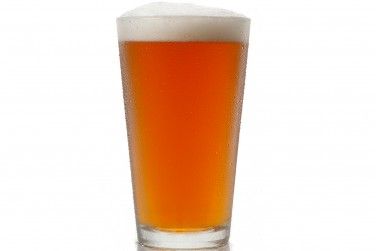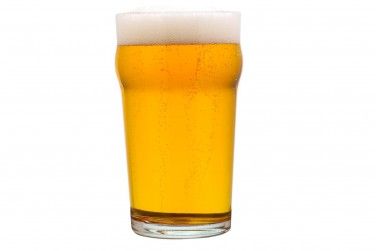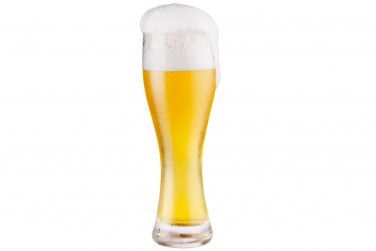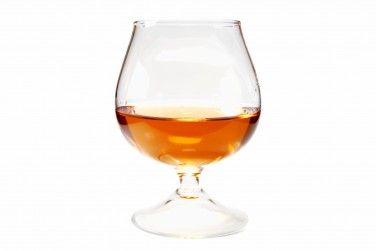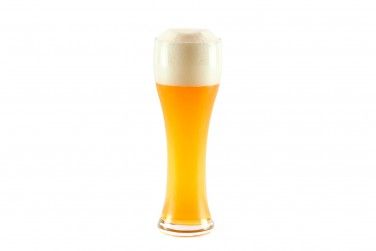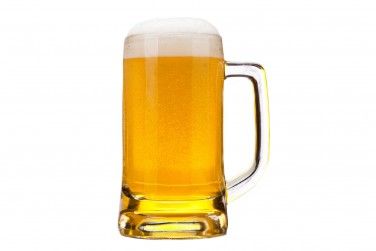Red solo cups are fine for backyard barbecues and certain country music artists, but when we’re hosting a dinner party or feeling fancy, we prefer to drink our adult beverages out of slightly more sophisticated vessels. And, as if feeling like a badass holding a martini weren’t enough, there’s scientific reason to be choosy about your glass.
The container you pour your beverage into can help maximize the aromas and body of the drink to optimize flavor, says David “Rev” Ciancio, owner Idle Hands Bar and director of marketing for Schweid & Sons. Some research even suggests that the shape of your glass can affect how much and how quickly you drink.
Science aside, some glassware exists today because that’s the way people have always enjoyed those drinks, explain Geza Horvath, a sommelier for New York City’s Artisanal Bistro. And of course the elegance of certain glasses (despite their impracticality) can give individuals a perception of a finer drinking experience, adds Matt Gorecki, a beer expert and consultant.
Ready to get the best out of your drink (and stay classy doing it)? Pick your poison below and find out how to make the most of each sip.
American Pint
Sometimes called a shaker, the American pint typically holds 16 ounces of suds. It has a simple, cylindrical shape that gradually widens at the top and is generally meant for lagers or brown ales, Ciancio explains. Although the large, wide glass is cheap to manufacture and easy to drink out of (making it a staple in most bars), it’s actually not the best way to bring out the aromas and flavors in many craft beers, he adds. (Try one of the options below instead.)
Imperial Pint
American and imperial pints share the same basic characteristics (they’re meant to hold beer, they’re cheap, and they’re easy to drink from), yet the British version of the pint glass is a 20-ouncer with a slight ridge toward the top that makes it easier for a barback to stack. Ciancio recommends this glassware for English ales.
Pilsner
While the name makes it an obvious fit for the classic pilsner, Ciancio adds that other German-style beers like bock or kölsch are also nice to sip from this glass. The tall, tapered shape captures the carbonation and color of a pilsner while allowing a foamy head to form.
Snifter
Also known as a brandy snifter, cognac glass, or balloon, a snifter is a short-stemmed glass with a wide bottom and relatively narrow top. The wider base allows room for swirling to release aromas, which then get trapped at the narrow top. A rounded bottom makes it easy to cup in your hand, simultaneously warming the liquor. Ciancio recommends using this type of glassware for intense beers with strong aromas like barley wines, strong ales, quads, or wee heavys. This glass is bound to come in handy as well if you’re a brandy drinker.
Wheat Beer Glass
Similar to pilsner glasses, wheat beer or weizen glasses are a little thinner, allowing for more head (or frothy foam) on the beer, Ciancio explains. The tall and slender glassware also help amplify aromas and are perfect for their namesake beers.
Mugs and Steins
While Ciancio cautions against enormous tubs, reasonably sized mugs and steins are ideal for red ales, lagers, porters, stouts, or anything robust with deep flavors. The wide, cylindrical mug has thick glass walls to help insulate your beer, and a large handle makes it easy to carry without inadvertently warming up your drink.
Bonus Points for Beer Snobs
Look for lace. “If your glass has a nice lace (leftover foam rings) as you drink, that means the person serving you cares about your experience and the glass has been properly cleaned,“ Ciancio says. Steer clear of frosty mugs. A very cold glass can detract from the taste of your brew. “Some beers, like cask ales, are better served at room temperature,” he says. Foam is your friend. While foam may have been a sign of concern in your keg-beer days, don’t fret. “Obviously you don’t want a glass full of bubbles, but a nice head on a beer not only brings out the aromas, but it also protects the beer from getting too warm too quickly, and keeps the beer moving in your glass,” Ciancio explains.
Martini
Though the first sip can be a struggle not to spill, there is a point to the martini glass’s cone shape: It prevents your ingredients from separating, says Betsy Fischman, co-founder of BoozeMenus.com. The long stem also ensures your hands won’t affect the temperature of the drink. As a bonus, “the martini glass is sexy no matter who’s holding it!” Fischman says.
Coupe
The coupe was the Champagne flute of our grandparents’ generation, but today it’s morphed into the go-to glass for many cocktails, Fischman says. Think sidecars, daiquiris, and Manhattans. Plus the stem keeps your drink cool, and it looks elegant and inviting.
Highball
The highball glass is ideal for carbonated cocktails, Fischman says. “It’s best to keep less surface liquid exposed to air,” she explains. “The more exposed, the quicker the carbonation will evaporate, leaving you with a flat drink.” Order a gin and tonic, scotch and soda, or an anything-and-soda combo, and you’ll often find yourself holding a highball.
Lowball
“Drinking a cocktail should be a pleasurable experience, and presentation and pleasure go hand-in-hand,” Fischman says. Lowball glasses are ideal for spirits or boozier cocktails (think scotch or brandy served on the rocks) because they average two to four ounces. Nice since drinking a two-ounce cocktail in a 10-ounce highball may feel a little awkward.
Tulip or White Wine Glass
Usually white and rose wine are served in slender, tulip-shaped glassware, and that’s not just because of tradition. Smaller glasses help slow down any rise in temperature from the chilled beverages, while the stem of the glass allows you to hold your drink without your hands heating it up, Horvath explains.
Red Wine Glass
Red wines should be served in larger, bowl-shaped glasses to increase surface area and allow for more aroma release, Horvath says. If you only own larger glasses, don’t freak out: White wine in a red glass will only mildly affect the taste, Fischman says, however, the smaller the glass, the colder it will stay. Fischman does warn against Champagne in a red wine glass: The wider the surface area, the quicker it will lose carbonation, resulting in a flat drink.
Flute
The narrow, tulip-shaped flute is a familiar drinking vessel at weddings and toast-worthy occasions for holding your celebratory bubbly. “The carbonation is the major reason behind the shape,” Horvath says. The glass helps retain Champagne’s trademark carbonation, and the bowl is also designed to visually highlight the rising bubbles.
Stemless Glass
These are becoming a staple in modern kitchens, with their clean design and easy-to-clean shape (no worries about shattering a delicate stem here!). Stemless glasses are best for reds served at room temp since your hands holding the glass can unintentionally heat up cooler whites and roses.
The Bottom Line
Is it time to retire red solo cups from your cabinet forever? Yes, if you ask Ciancio, who says the only time to drink out of a plastic cup is “never.” However, at the end of the day, it’s not just what you’re drinking but also where you’re drinking. “While weddings call for champagne served in crystal, a walk down Bourbon Street should always be complimented by a lampshade-shaped plastic cup,” Fischman says. To that, we say cheers!

